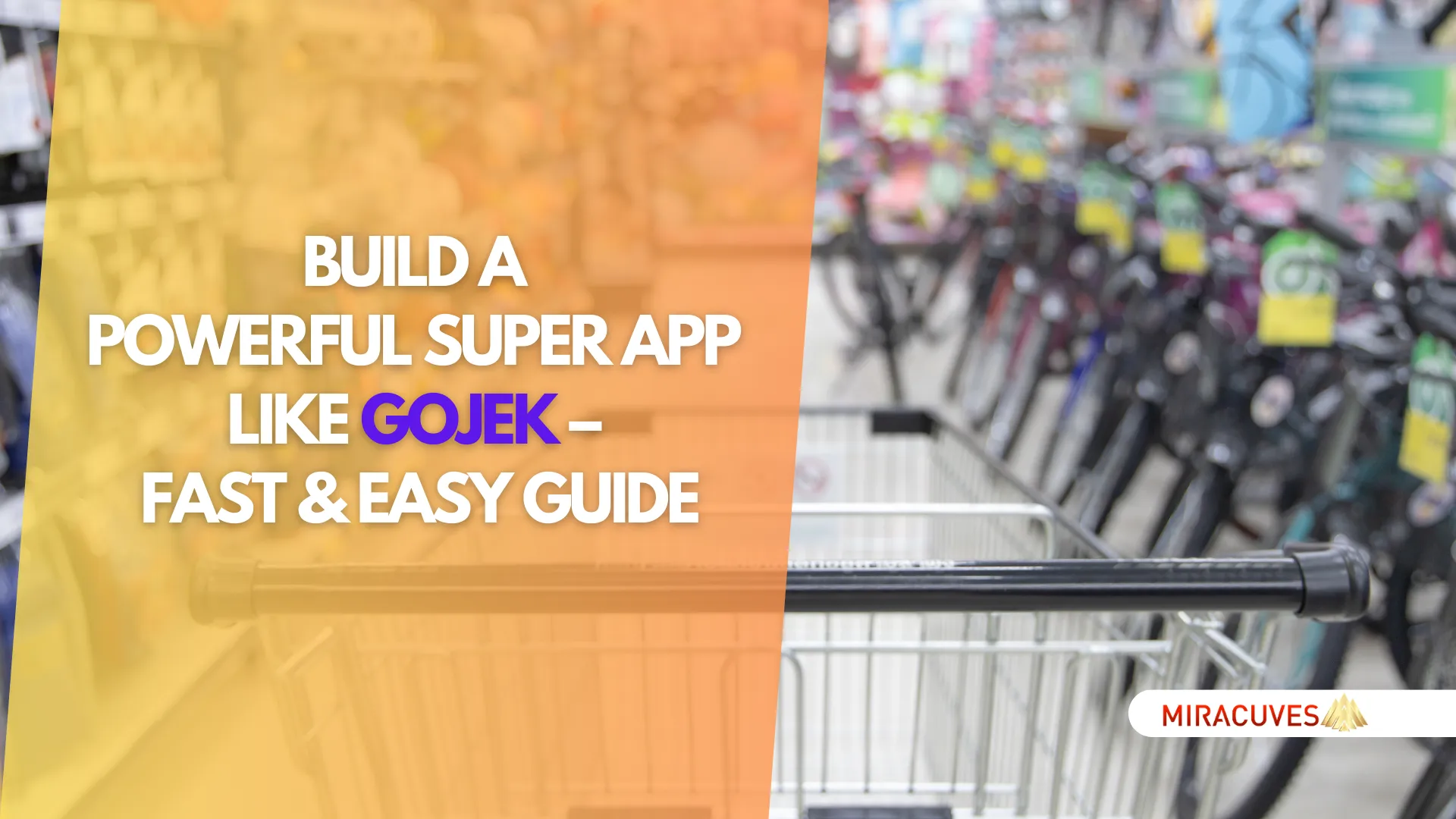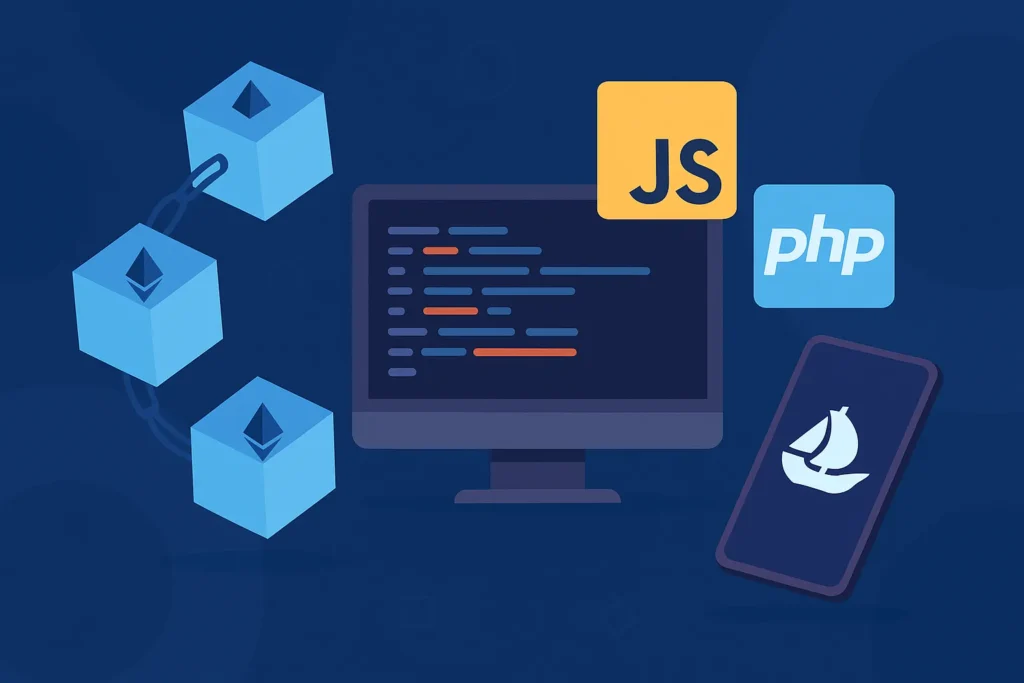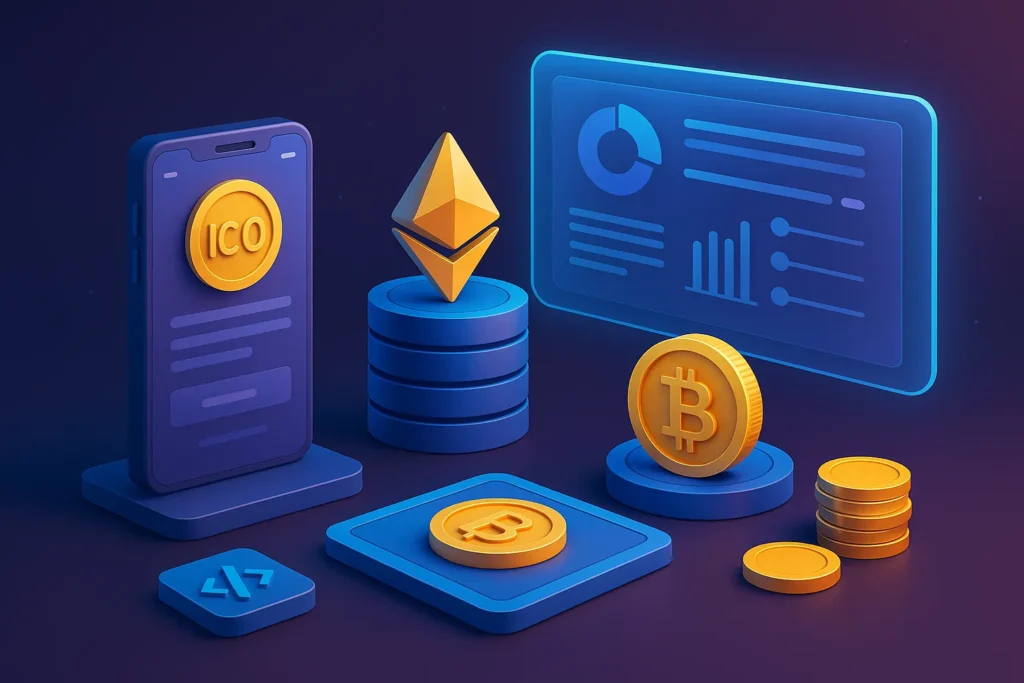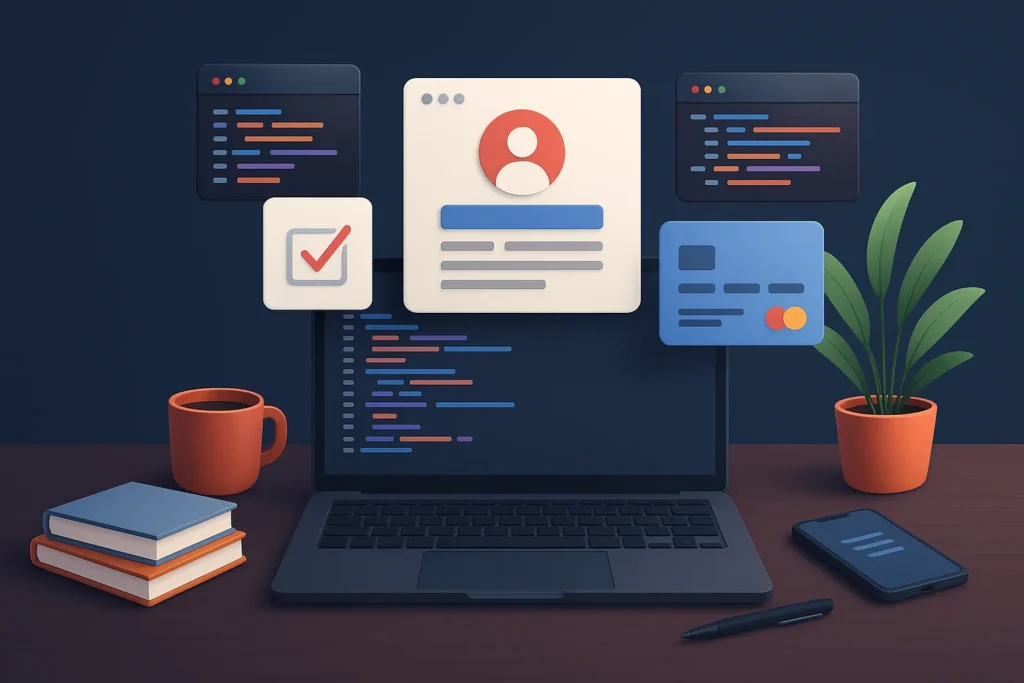In today’s fast-paced world, super apps like Gojek have revolutionized how people access everyday services. Gojek has become a one-stop solution, combining transportation, food delivery, financial transactions, and more into a single platform. With just a few taps, users can book a ride, order food, transfer money, or send packages, all without leaving the app. This seamless integration of services offers unmatched convenience to users and has driven the rising popularity of super apps globally.
Developing a Gojek-like platform opens doors to incredible market opportunities. As people increasingly prefer multi-service apps to reduce clutter on their phones, building an app that meets various needs can unlock new revenue streams and foster customer loyalty. Whether you’re looking to disrupt regional markets or tap into global trends, creating a Gojek-style app will set you on the path to becoming a leader in the super app ecosystem.
This guide provides a comprehensive framework for building your own Gojek-like platform. From technical requirements and business models to monetization strategies and market growth plans, every aspect will be covered in detail. Let’s explore the steps required to create a multi-service app that meets modern user expectations and competes with industry giants.
What the App Is and What It Does
A super app like Gojek integrates multiple services into a single platform, providing unparalleled convenience for users. Gojek combines essential everyday services such as ride-hailing, food delivery, digital payments, and logistics into one ecosystem. This eliminates the need for multiple apps, allowing users to handle various needs seamlessly through one application.
The core idea behind Gojek is to simplify life for users while creating a sustainable business model that benefits customers, drivers, and merchants alike. Users can book rides, order meals, or send packages, all with just a few taps. Drivers enjoy more work opportunities across multiple services, and merchants benefit from increased exposure and sales through the app.
Gojek’s app structure includes key services like:
- GoRide: Motorbike ride-hailing for quick urban transport.
- GoCar: Car ride-hailing for comfortable travel.
- GoFood: On-demand food delivery with a vast network of local restaurants.
- GoSend: Package delivery service for both businesses and individuals.
- GoPay: A digital wallet for secure payments, transfers, and bills.
Why Build This App?
Building a Gojek-like multi-service app offers a huge opportunity in today’s digital world. Users increasingly prefer convenience and efficiency, and apps that bundle multiple services into a single platform are becoming the future of mobile technology. A super app allows businesses to capitalize on various revenue streams, creating a more sustainable and scalable platform.
Meeting Market Demand for Convenience
Consumers are drawn to platforms that offer multiple services under one roof. Rather than downloading several apps for transport, delivery, and payments, users prefer a consolidated app experience. This trend has surged, especially in urban markets where speed and efficiency are key to consumer satisfaction.
Maximizing Profit Potential through Multiple Revenue Streams
A multi-service platform unlocks diverse revenue channels, such as:
- Commissions from drivers and merchants
- Subscription fees for premium services
- Advertising opportunities and partner promotions
This diversification makes the business model resilient to market shifts, ensuring steady growth even if one segment underperforms.
Competitive Edge Through Localized Solutions
Unlike niche apps, a Gojek-style platform offers flexibility to adapt services to specific regions. For example, integrating two-wheeler taxis in dense cities or offering cash-on-delivery options in developing markets gives your app a competitive edge. Localization helps build trust with users and merchants, ensuring sustained engagement.
What Can I Do to Differentiate It?
Building a Gojek-like app is just the beginning; differentiating your platform will be essential for gaining a competitive edge in the growing super app market. Here are some unique strategies and features that can set your app apart:
1. AI-Driven Recommendations and Personalization
- Leverage artificial intelligence to offer personalized service suggestions based on user behavior. For example, recommend rides or meals based on previous orders or location patterns.
- Personalization ensures users stay engaged longer and improves the overall experience.
2. Green and Sustainable Services
- Introduce eco-friendly ride options or delivery services using electric vehicles and bikes. Offer users green rewards or points for selecting these sustainable alternatives.
- This resonates with environmentally conscious customers, giving your app a reputation for social responsibility.
3. Social Features for Engagement
- Add a social layer to the platform, such as group ordering or carpooling features. Users could invite friends or colleagues to join rides or meals through the app.
- This encourages organic growth and adds value by fostering community interactions.
4. Integrated Loyalty and Reward Programs
- Offer a centralized reward system across all services, such as rides, food orders, and transactions. Users earn points that can be redeemed for discounts or special offers.
- A well-designed loyalty program boosts user retention and incentivizes frequent usage.
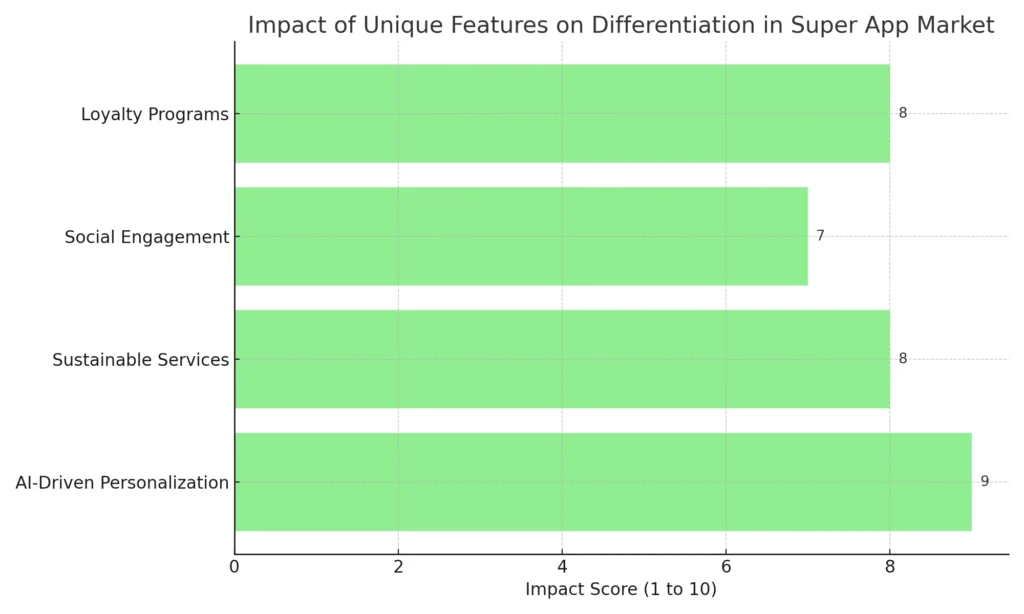
Market Size, Growth, and Business Model
The super app market has seen rapid expansion, driven by consumer demand for convenience and all-in-one platforms. With rising smartphone usage and urbanization, multi-service apps like Gojek are becoming essential for daily tasks and services. As people seek simplified digital solutions, the market presents a prime opportunity to launch multi-functional platforms that cater to diverse needs.
Market Size and Growth Potential
- The global super app market is projected to grow significantly, expected to reach billions in annual revenue by the next decade.
- Factors driving this growth include increasing smartphone penetration, growing demand for contactless payments, and the shift towards on-demand services.
- Markets across Southeast Asia, Africa, and Latin America are seeing a surge in super app adoption, making these regions key targets for expansion.
Business Model Overview
Super apps thrive on multiple revenue streams that ensure profitability across different services. Below are the core business model strategies used by multi-service apps:
- Commissions from Services
- Charge a percentage on transactions from drivers, merchants, and service providers.
- Subscription Plans
- Offer premium memberships to users for discounts, priority services, or exclusive features.
- Advertising and Partner Promotions
- Generate passive income by showcasing in-app ads or collaborating with brands for targeted promotions.
- Transaction and Payment Fees
- Earn fees through digital wallet usage and processing payments on the platform.
| Revenue Stream | Description | Profitability Potential | Impact on User Engagement |
|---|---|---|---|
| Commissions from Services | Charge a percentage on transactions made by drivers, merchants, or service providers. | High – Consistent revenue from every transaction. | Low – Users experience seamless service. |
| Subscription Plans | Offer premium memberships with discounts, priority access, or exclusive features. | Moderate – Recurring revenue from loyal users. | High – Increases customer loyalty and retention. |
| Advertising & Partner Promotions | Showcase in-app ads or collaborate with brands for targeted promotions. | Moderate – Depends on ad placements and partnerships. | Medium – Requires non-intrusive ads to maintain satisfaction. |
| Transaction and Payment Fees | Earn fees from digital wallet usage and processing payments through the platform. | High – Revenue scales with more transactions. | Medium – Incentivizes app usage for payments and transfers. |
Features of the App
Creating a super app like Gojek means incorporating a variety of user-friendly features that enhance convenience and provide seamless service delivery. Below are the essential features your multi-service app must offer to attract users, engage drivers, and support merchants effectively:
User-Side Features
- Real-Time Tracking: Allow users to track rides, food deliveries, or packages in real-time.
- In-App Payment Options: Integrate digital wallets, credit cards, and cash on delivery for flexible payments.
- Multi-Service Dashboard: Provide easy access to ride-hailing, food delivery, and payment services from a single interface.
- Loyalty Rewards and Coupons: Encourage frequent use by offering points, discounts, or promo codes.
- Instant Customer Support: Enable users to chat or call support within the app for quick assistance.
Driver Features
- Smart Route Optimization: Help drivers find the best routes, reducing travel time and fuel consumption.
- Flexible Work Hours: Give drivers the freedom to work on their schedules.
- Performance Analytics: Provide detailed reports on earnings, completed trips, and feedback to help drivers improve.
Admin and Merchant Features
- Merchant Management Tools: Help merchants track orders, manage inventory, and update menus or services.
- Analytics Dashboard: Provide admins with insights into user behavior, service performance, and transactions.
- Compliance Monitoring: Ensure all services comply with local regulations and policies.
Technical Requirements
Building a super app like Gojek requires a robust and scalable technical foundation to support multiple services while ensuring high performance and security. Below is an overview of the essential technical components needed for seamless operation.
Backend Framework and Database
- Backend: Use frameworks like Node.js or Django to manage server-side operations efficiently, ensuring fast data processing across services.
- Database: Implement PostgreSQL or MongoDB to store user profiles, transactions, and service data securely.
Frontend Development
- Cross-Platform Frameworks: Utilize Flutter or React Native to ensure the app runs smoothly on iOS and Android devices.
- UI Libraries: Incorporate modern UI libraries to create a sleek, user-friendly interface.
API Integrations
- Payment Gateways: Integrate payment solutions like Stripe or PayPal for smooth financial transactions.
- Maps and Location Services: Use Google Maps API to enable real-time tracking and route optimization.
- Communication API: Implement Twilio or Firebase for notifications and in-app chat features.
Cloud Infrastructure and Security
- Cloud Hosting: Deploy the backend on AWS or Google Cloud to ensure scalability and flexibility.
- Content Delivery Network (CDN): Use Cloudflare for faster loading times and global access.
- Security Protocols: Apply SSL encryption and two-factor authentication (2FA) to protect sensitive data and maintain user trust.
Hosting your app on Google Cloud ensures scalability and reliable performance as your user base grows (Google Cloud). Cloud infrastructure allows the app to handle high volumes of traffic efficiently while supporting modular development and real-time updates, ensuring smooth service delivery across all platforms.
| Component | Technology/Service | Purpose |
|---|---|---|
| Backend Framework | Node.js, Django | Handles server-side operations for smooth performance. |
| Database | PostgreSQL, MongoDB | Stores user profiles, transactions, and service data securely. |
| Frontend Framework | Flutter, React Native | Ensures cross-platform compatibility for iOS and Android. |
| Payment Gateways | Stripe, PayPal | Enables secure financial transactions within the app. |
| Maps & Location Services | Google Maps API | Provides real-time tracking and route optimization. |
| Communication API | Twilio, Firebase | Supports notifications and in-app chat features. |
| Cloud Hosting | AWS, Google Cloud | Provides scalable infrastructure to handle growth and traffic. |
| CDN (Content Delivery Network) | Cloudflare | Ensures fast loading times and smooth global access. |
| Security Protocols | SSL Encryption, 2FA | Protects user data and builds trust with secure transactions. |
Looking to create an all-in-one service platform?
Our team specializes in building scalable and
secure super apps tailored to your business needs.
Design and User Interface (UI/UX)
The design and user interface of your super app will define how users interact with your platform. A well-crafted UI/UX ensures that users can navigate multiple services easily and perform tasks quickly, fostering user satisfaction and retention.
Key Design Principles
- Simple and Intuitive Layout: Users should be able to switch between services like ride-hailing, food delivery, and payments with minimal effort.
- Personalized Experience: Offer users the ability to customize their dashboard with frequently used services for easier access.
- Light and Dark Mode: Implement theme options to improve user comfort during extended usage.
User Experience (UX) Focus
- Seamless Navigation: Use clear icons, well-structured menus, and quick access buttons to ensure smooth interactions across services.
- Interactive Visual Elements: Enable users to view their ride status or delivery progress with live tracking animations.
- Onboarding Tutorial: Provide a quick tutorial for new users to familiarize themselves with the app’s features.
Testing and Iteration
- Wireframing and Prototyping: Create wireframes and prototypes to validate the design early on.
- Usability Testing: Conduct real-world tests with users to identify pain points and optimize the design accordingly.
Development Process
Developing a super app like Gojek involves a step-by-step process to ensure smooth execution and delivery. Each phase plays a critical role, from planning features to testing and launching the platform. Below is an overview of the key stages involved in the development process.
Step 1: Research and Planning
- Identify core services to offer, such as ride-hailing, food delivery, and payments.
- Conduct market research to understand the needs of your target audience and define the unique value your app will bring.
Step 2: Building the MVP (Minimum Viable Product)
- Develop a basic version of the app with essential features like user registration, service selection, and payments.
- Launch the MVP to a small user group for early feedback, helping to identify and address potential issues.
Step 3: Full-Scale Development
- Add advanced features like real-time tracking, loyalty programs, and multiple payment methods.
- Integrate merchant and driver interfaces to manage their operations smoothly within the app.
Step 4: Testing and Quality Assurance (QA)
- Perform extensive QA testing to ensure the app runs without bugs or performance issues.
- Conduct load testing to verify that the platform can handle high traffic during peak usage.
Step 5: Launch and Deployment
- Launch the app on Google Play Store and Apple App Store, ensuring it complies with platform requirements.
- Plan a smooth rollout with marketing campaigns to generate buzz and attract early users.
Step 6: Post-Launch Support and Updates
- Monitor user feedback and roll out updates regularly to enhance features and performance.
- Stay agile by introducing new services or features based on user demands and market trends.
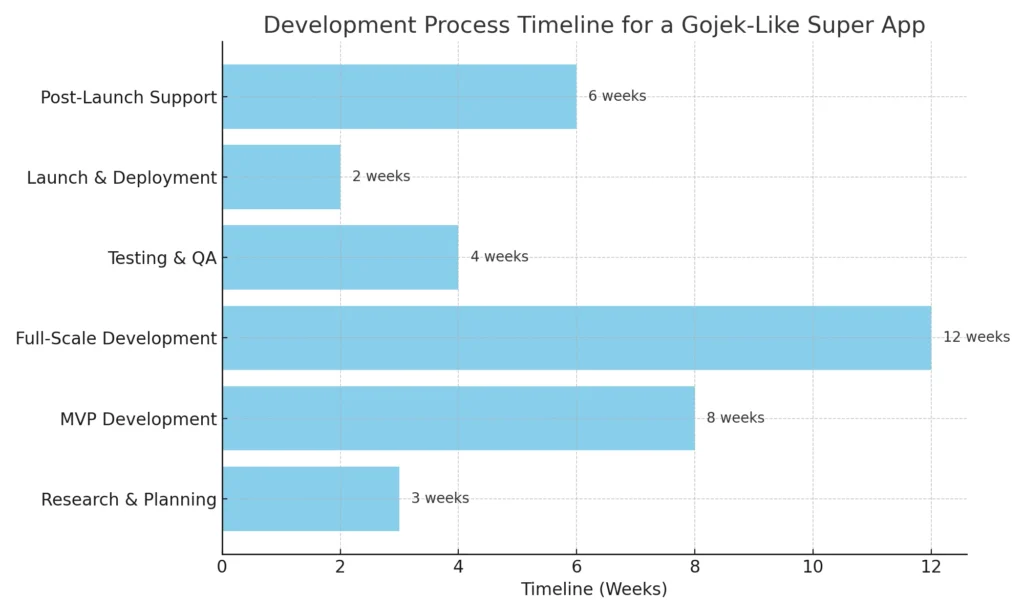
Cost Estimation and Timeframe
Developing a multi-service app like Gojek requires careful planning to manage both budget and time effectively. The total cost depends on several factors, such as the number of services, features, and technologies integrated into the platform. Below is an overview of the cost and timeframe breakdown across key development phases.
Cost Breakdown by Development Phase
- Research and Planning:
- Cost: $5,000 – $10,000
- Timeframe: 2 – 4 weeks
- Involves market research, defining services, and creating the app’s roadmap.
- MVP Development:
- Cost: $15,000 – $30,000
- Timeframe: 8 – 12 weeks
- Focuses on building a functional version with core services and basic features.
- Full-Scale Development and Integration:
- Cost: $30,000 – $60,000
- Timeframe: 12 – 16 weeks
- Includes advanced features, service integrations, and merchant/driver interfaces.
- Testing and QA:
- Cost: $5,000 – $15,000
- Timeframe: 3 – 4 weeks
- Covers bug fixes, performance testing, and usability checks.
- Launch and Deployment:
- Cost: $5,000 – $10,000
- Timeframe: 2 weeks
- Involves app store submissions, marketing campaigns, and user onboarding.
- Post-Launch Support and Updates:
- Cost: $10,000 – $20,000 annually
- Ongoing maintenance to introduce new features and ensure smooth operations.
| Development Phase | Estimated Cost | Timeframe | Description |
|---|---|---|---|
| Research and Planning | $5,000 – $10,000 | 2 – 4 weeks | Conduct market research, define services, and create a roadmap. |
| MVP Development | $15,000 – $30,000 | 8 – 12 weeks | Build a basic version with essential services and features. |
| Full-Scale Development | $30,000 – $60,000 | 12 – 16 weeks | Integrate advanced features, merchant tools, and multiple services. |
| Testing and Quality Assurance | $5,000 – $15,000 | 3 – 4 weeks | Perform bug fixes, usability tests, and performance checks. |
| Launch and Deployment | $5,000 – $10,000 | 2 weeks | Submit to app stores, market the app, and onboard users. |
| Post-Launch Support and Updates | $10,000 – $20,000 annually | Ongoing | Maintain the app, introduce updates, and add new features. |
Monetization Strategies
Developing a super app like Gojek opens up multiple revenue streams that ensure profitability while providing valuable services to users. The strength of a super app lies in its ability to diversify income sources across different services. Here are some effective monetization strategies to make your app financially sustainable:
1. Commission from Services
- Charge a percentage of every transaction made through the platform, whether from rides, food orders, or delivery services.
- This commission model ensures a steady income stream as more users and merchants engage with your app.
2. Subscription Plans
- Offer premium memberships with exclusive benefits, such as discounts on rides or priority delivery services.
- Subscription plans create recurring revenue and enhance customer loyalty.
3. In-App Advertising and Partner Promotions
- Collaborate with brands to display targeted ads and run exclusive promotions within the app.
- Non-intrusive ads provide passive income while keeping the user experience intact.
4. Payment and Transaction Fees
- Charge small fees for digital payments or wallet transactions within the app.
- Transaction fees contribute to revenue while also encouraging the use of your digital wallet services.
5. Cross-Promotion of Services
- Incentivize users to try new services within the app through bundled offers and loyalty programs. For example, offer ride discounts when a food order is placed.
Launching and Marketing the App
A well-planned launch strategy ensures that your super app makes a strong first impression and attracts early users. The key to a successful launch is creating excitement around the app while ensuring it’s fully functional and user-friendly. Here’s a step-by-step approach to launching and marketing your Gojek-like app:
Pre-Launch Preparation
- Beta Testing: Launch the app with a small group of users to identify bugs and gather feedback for final improvements.
- Build Hype: Use teasers, social media campaigns, and email marketing to create buzz around the launch.
- Referral Programs: Offer rewards like free rides or discounts to users who invite others to join early.
App Store Optimization (ASO)
- Optimize your app’s presence on the Google Play Store and Apple App Store with relevant keywords, clear descriptions, and engaging visuals.
- Collect positive reviews from beta testers to improve visibility during the launch.
Launch Campaigns
- Coordinate online and offline launch events to promote the app. Collaborate with local influencers to spread the word.
- Run targeted ads on social media platforms like Instagram, Facebook, and TikTok to attract your audience.
Post-Launch Marketing
- Use push notifications to engage new users with promotions or service reminders.
- Implement seasonal campaigns and exclusive offers to retain users beyond the initial launch phase.
Legal and Regulatory Considerations
Launching a super app like Gojek requires strict compliance with legal and regulatory frameworks to operate smoothly and build trust among users. Since the platform handles multiple services—like transportation, payments, and deliveries—ensuring regulatory alignment across sectors is essential.
1. Transportation and Delivery Regulations
- Obtain the necessary permits for ride-hailing and delivery services to operate legally in different regions.
- Ensure insurance coverage for drivers and delivery personnel to protect both users and service providers in case of accidents.
2. Financial and Payment Compliance
- Implement KYC (Know Your Customer) and AML (Anti-Money Laundering) protocols to verify users and prevent fraud.
- Ensure compliance with financial regulations to operate digital wallet services safely and securely.
3. Data Privacy and Security Laws
- Follow data protection laws such as GDPR or CCPA to safeguard user information and prevent breaches.
- Use encryption protocols to protect personal and payment data, ensuring compliance with global privacy standards.
4. Consumer Rights and Terms of Service
- Clearly define terms of service and user agreements to set expectations about your platform’s offerings and policies.
- Provide accessible customer support channels to handle disputes or refund requests in compliance with local consumer laws.
5. Employment and Labor Regulations
- Ensure that drivers and delivery agents have transparent agreements, covering wages, benefits, and working conditions in line with local labor laws.
Ensuring compliance with local financial regulations is essential for operating a super app. Following international standards, such as those outlined by the SEC (SEC), helps build trust and prevents legal complications. Implementing protocols like KYC (Know Your Customer) and AML (Anti-Money Laundering) also ensures safe financial operations and user protection.
Future Growth and Scalability
The future of a super app like Gojek lies in its ability to adapt, expand, and innovate. Building a scalable platform ensures your app can handle growing user demand and integrate new services seamlessly. Here’s how you can future-proof your app for sustained success.
1. Cloud-Based Infrastructure for Seamless Growth
- Use cloud platforms like AWS or Google Cloud to scale server resources automatically as your user base grows.
- Implement microservices architecture, allowing different modules (ride-hailing, payments, delivery) to operate independently for better flexibility and performance.
2. Continuous Feature Upgrades and Innovation
- Introduce new services such as grocery delivery, healthcare consultations, or event ticketing to diversify the app’s offerings.
- Leverage AI and machine learning to provide smarter recommendations and insights for users, improving engagement.
3. Expand to New Markets
- Explore opportunities to enter new regions and international markets by localizing services based on cultural preferences and regulations.
- Offer multi-language support and multiple payment methods to cater to diverse audiences.
4. Data-Driven Decision Making
- Use analytics tools to track user behavior, service performance, and market trends.
- Predict demand patterns and optimize operations based on insights, ensuring efficient resource management.
5. Strategic Partnerships for Growth
- Collaborate with local service providers, financial institutions, and delivery networks to enhance your service offerings.
- Build strategic alliances that help your app tap into new markets and reach a broader audience.
Why Trust Miracuves Solutions for Your Next Project?
Choosing the right development partner is essential for building a successful super app. With Miracuves Solutions, you gain a trusted ally that offers end-to-end support, deep expertise, and unparalleled speed in delivering multi-service platforms. Here’s why Miracuves Solutions is the perfect choice for your next project:
1. Proven Expertise in Super App Development
- Miracuves Solutions has a track record of building successful multi-service apps with complex integrations, seamless user experiences, and secure platforms.
- Our team of experts understands the intricacies of combining services like ride-hailing, delivery, and digital payments into a cohesive ecosystem.
2. Speed and Cost-Efficiency
- We complete development projects 30 times faster than traditional firms, ensuring your app is ready to launch without delays.
- With up to 90% cost savings, we make building world-class super apps both affordable and high-quality.
3. Scalable and Future-Ready Solutions
- Miracuves Solutions builds scalable apps using the latest technologies, ensuring your platform grows effortlessly with user demand.
- Our solutions are future-proof, with modular architecture that allows for easy integration of new services and features.
4. Comprehensive Support from Start to Finish
- From the initial concept and design to development, testing, and post-launch maintenance, we provide continuous support every step of the way.
- Our dedicated team offers technical assistance and regular updates, ensuring your platform runs smoothly long after launch.
Conclusion
Building a super app like Gojek is not just about creating an app—it’s about transforming everyday experiences into a seamless digital ecosystem. By combining multiple services such as ride-hailing, food delivery, payments, and more, your platform can offer users the convenience they crave, all in one place.
A well-planned development process, with scalable infrastructure and smart monetization strategies, ensures your app not only launches successfully but also grows sustainably. With features that engage users, empower merchants, and support drivers, your platform will build a loyal community and generate steady revenue.
Choosing Miracuves Solutions as your partner ensures that your project is delivered faster, cost-efficiently, and future-ready. With the right expertise and continuous innovation, you’ll be able to capture market opportunities and establish yourself as a leader in the super app industry.
Now is the perfect time to bring your vision to life. A well-executed super app can redefine convenience for users and position your business at the forefront of the digital revolution. The future is in multi-service platforms—let’s build yours today!
Launch your multi-service app faster with our pre-built Gojek-inspired platform!
See how it can work for your business.Transform your business into an on-demand empire with our feature-rich Gojek clone covering many services.
FAQs
How much does it cost to build a super app like Gojek?
Developing a Gojek-like app typically costs between $50,000 and $100,000, depending on the complexity, features, and services integrated. Partnering with efficient developers like Miracuves Solutions can help you significantly reduce costs.
How long does it take to launch a multi-service app?
On average, it takes 4 to 6 months to build a complete super app, including planning, MVP development, testing, and deployment. Using agile processes can shorten the timeline and ensure faster delivery.
What services can I integrate into my super app?
A super app can include services like ride-hailing, food delivery, package delivery, digital payments, healthcare consultations, and more. The flexibility of the platform allows you to add new services over time based on market trends and user demand.
How do super apps like Gojek generate revenue?
Revenue is earned through commissions, subscription plans, advertising, and transaction fees. Offering multiple revenue streams ensures steady income across different services, making the app financially sustainable.
What technologies are required to build a super app?
Essential technologies include Node.js or Django for the backend, Flutter or React Native for the frontend, and APIs for payment gateways and real-time tracking. Cloud hosting on AWS or Google Cloud ensures scalability.



